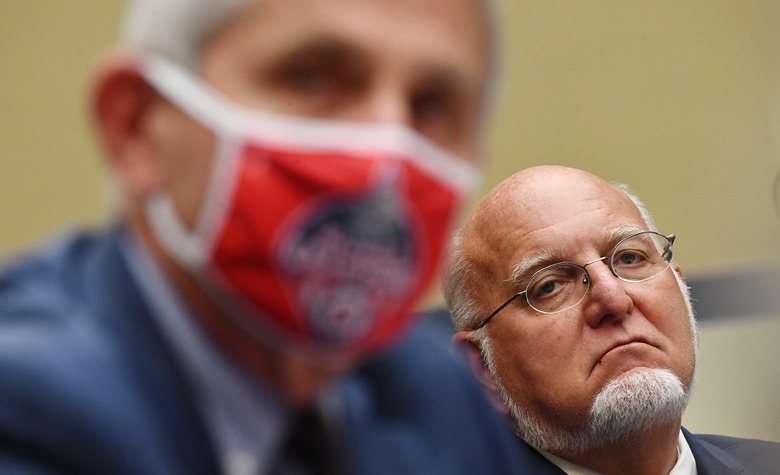Experts Just Gave Us A Deeply Depressing New Coronavirus Warning
- Coronavirus deaths could reach 2,900 per day by the end of the year, according to health experts.
- With the coronavirus death toll in the U.S. currently at around 216,000, the figure could nearly double by December in a worst-case scenario.
- Experts warn that we're bound to see a massive spike in coronavirus cases due to colder weather, flu season, schools opening back up, and pandemic fatigue.
According to the most up to date health data, the coronavirus pandemic has already killed nearly 216,000 Americans. Looking ahead, the sad reality is that the death toll in the U.S. is poised to jump even higher as we enter November and December. In a scenario that hopefully won't play out, recent projections from the Institute for Health Metrics and Evaluation suggest that the coronavirus death rate in the U.S. could reach 2,900 people per day by the end of December.
To put that jarring figure into context, the daily number of coronavirus-related deaths in the U.S. reached a peak of 2,700 back in mid-April. Since then, the figure has gone down drastically, with the current death rate hovering in the 700 range over the past few weeks.
The 2,900 figure does come with some qualifications worth mentioning. Specifically, the 2,900/day figure is the current projection based on how things are currently going, which is to say the projections are changing week to week. That said, the projection drops down to about 600-700 per day if people start wearing masks universally. In a worst-case scenario, where people forgo masks and business re-open at 100% capacity, the projection for daily deaths rises to 7,200 per day.
As to how this plays out cumulatively, the current projection for total coronavirus-related deaths by December 31 stands at 360,000. In a best-case scenario, that figure would be 277,000 by the end of the year. And in a worst-case scenario, that figure would be 434,000 by the end of the year.
Suffice it to say, it will become more challenging to keep the coronavirus at bay over the coming weeks and months due to a variety of factors.
For starters, colder weather is on the way which will drive most people indoors for extended periods of time. As a result, the coronavirus will be able to spread more readily as people start congregating in smaller indoor spaces. To this point, indoor gatherings have long been associated with a disproportionate number of coronavirus infections. This is partly due to poor ventilation and the tendency for people attending indoor gatherings to take coronavirus safety precautions less seriously.
"We need to pay a little bit more attention now to the recirculation of air indoors," Dr. Anthony Fauci said back in September, "which tells you that mask-wearing indoors when you're in a situation like that is something that is as important as wearing masks when you're outside dealing with individuals who you don't know where they came from or who they are."
To this point, when Dr. Fauci issued a list of eight activities to avoid partaking in, indoor gatherings was at the top of the list. And speaking to how quickly the coronavirus can spread in indoor settings, an indoor karaoke party in Florida resulted in 50 coronavirus infections, two deaths, and multiple hospitalizations.
Indoor circulation issues aside, health experts have also warned that the impending flu season will also be a challenge when it comes to keeping the coronavirus at bay.
ScienceMag reports:
The prospect of a flu season during the coronavirus pandemic is chilling to health experts. Hospitals and clinics already under strain dread a pileup of new respiratory infections, including influenza and respiratory syncytial virus (RSV), another seasonal pathogen that can cause serious illness in young children and the elderly. In the United States, where some areas already face long waits for COVID-19 test results, the delays could grow as flu symptoms boost demand.
"The worst-case scenario is both [the coronavirus and the flu] are spreading fast and causing severe disease, complicating diagnoses and presenting a double burden on the health care system," Harvard epidemiologist Marc Lipsitch explained early last month.
Coupled with school re-openings and pandemic fatigue, experts are anticipating a huge surge in coronavirus cases come November and December. That being the case, it's as important as ever for people to continue to wear masks, maintain proper hand hygiene, and follow social distancing guidelines.
